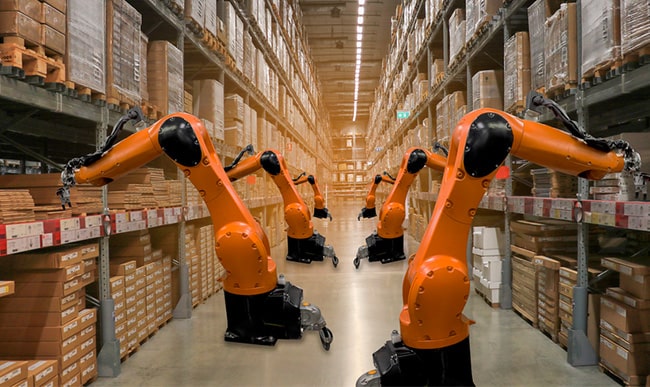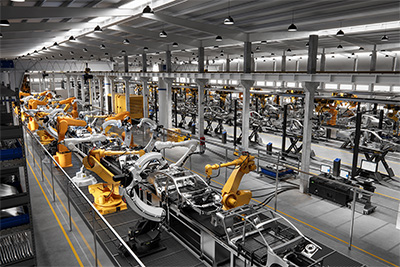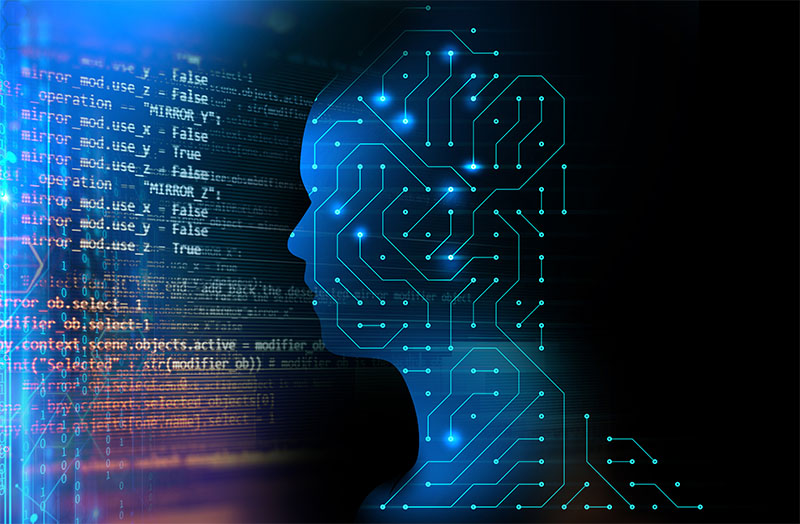There are countless articles making bold statements about how AI will kill job markets. However, in this blog post, I will explore how technological automation has historically impacted economies and consider a range of predictions for our future.
A brief history of automation
Automation is a key part of technology’s evolution and of modern economics. It is particularly pertinent to certain eras, the industrial revolution being a primary example. The mechanization of the factory in the late 18th to early 19th century was a logical shift for owners: they could maintain or increase productivity while lowering operational costs. This understandably led to protest and unrest. In industrial Britain, the Luddites famously destroyed the looms that threatened their livelihoods. And, more recently, General Motors experienced significant discontent after new automation machinery led to layoffs.
Humans have long been at risk of unemployment brought by technological change. Automation is not the only cause of making humans or even animals redundant — it’s the constant improvement of tools in general. The greater the efficacy of the tool; the less effort for the user.
While such change has erased some jobs, it has also brought a shift in the kinds of work available, for example, a trend away from manual to intellectual labor. In the UK over the last 50 years, employment in manufacturing has fallen from 25% to about 10% today, whereas the services sector now stands at over 80%.
The net-gain economic view
Many academics argue that there is a net gain over time. There are numerous academic studies on automation and its impact on jobs, particularly within the manufacturing industry. A major study by CEPR (the Centre of Economic Policy Research) refutes the idea that additional robotics lead to job loss. On the contrary, CEPR estimates that each additional robot per 1,000 workers in vehicle production actually increased overall employment by 1.3%. In the popular book Human + Machine: Reimagining Work in the Age of AI, AI is specifically heralded as a technology that will create new jobs if companies invest in it.
The net-gain argument states that, like all automation, AI can be an aggregate wealth creator because it creates new opportunities. By delegating tedious tasks to a machine, we give ourselves time to focus on more complex problems, share knowledge and be creative.
Generally speaking, this view comes with the caveat that with each advancement in automation technology, there is a short-term loss but a long-term gain.
The net-loss economic view
This is the hot topic right now. Not necessarily because the outcome is more likely, but because fear gets clicks. While doomsaying might get more attention, it doesn’t mean researchers and thought leaders don’t have a point. An economic study focused on US manufacturing during the ‘90s and ‘00s concluded that each robot replaced 5.6 human workers and reduced wages by 0.5%.
In its 2018 Future of Jobs report, The World Economic Forum predicted automation would destroy 75 million jobs but create 133 million over the next four years. The 2020 WEF report concluded that 85 million jobs will be displaced, while 97 million will be created by 2025. In the 2023 Future of Jobs report, 83 million jobs are predicted to be destroyed versus 69 million jobs created, “leading to a contraction of global labor markets by 14 million jobs in the next five years”. This suggests the trend is downward for human employees and upward for robots and algorithms.
Some predictions prior to the digital revolution claimed that we’d have new and unimaginable jobs in the future, but as Max Tegmark points out in Life 3.0, this prediction was way off. “… the vast majority of today’s occupations already existed a century ago.” The main trend, Tegmark asserts, isn’t that we’re “moving to new professions but that we’re crowding into those pieces of terrain … that haven’t been submerged by the rising tide of technology.”
The horse lesson
The role of horses in industry has an interesting story to tell. After all, the rate at which work is done in a vehicle is still measured in horse power. Horses were essential to agriculture and travel for millennia. Their role started to diminish during the second agricultural revolution, which is partially attributed to improvements to the plow “so that it could be pulled with fewer oxen or horse”. During the 20th century, their numbers fell from 20 million to 4.5 million in the USA as they were replaced by motor vehicles. The same logic can be applied to people: if a machine can do it better, the human is replaced.
If this view is to play out over the coming years, how can a business sell goods or services if there is no one with any disposable income to consume them? One fear is that the wealth gap will widen, with a small percentage in control of vast, automated powerhouses; and then the rest of us. We’ll explore possible solutions later. But first, let’s understand the impact AI is likely to have.

The scope of impact
It is well documented that AI will impact numerous types of workers: cashiers, paralegal assistants, bakers, bus drivers and construction workers to name just a few from this well-respected academic study by Oxford University. The list is long, and the jobs considered safe (archeology for example) are in relatively low demand. If the stats hold true, we’re set for a complete sociological sea change.
The Oxford study claimed there was a high probability that hospitality workers such as waiters, tour guides and bartenders would also be replaced by automation. It may be true that robotics and algorithms will outperform humans in these tasks, but this does not factor-in our visceral desire to interact with other human beings. The front-of-house hospitality staff is part of the authentic experience, and studies have shown that customers value this. Similar research highlights preferences for humans within other customer services.
It would be unfair to purely focus on AI’s impact on job retention and creation. In various sectors, automation and AI have proven to be lifesaving. Highly dangerous jobs have been replaced by robots. In many industries, this shift has saved lives. For example, robots can dive autonomously into flooded mines — deemed too dangerous for human divers — and use cameras to analyze deposits of increasingly rare and valuable minerals.
While we are right to worry about the job market as a whole, we should not overlook the benefits of automation in lowering the risk to human life and health. This helps us understand why automation is so desirable. It doesn’t just do the dull jobs. It does the dangerous and dirty ones, too.
Looking at what lies ahead, it can be hard to imagine what the next generation of jobs will be, just as it would have been hard for someone in the 19th century to imagine what our present-day jobs are. In Home Deus, the author Yuval Noah Harari, ponders this. One such example he gives is the virtual world creator, which is a job involving imagination and design skills. However, he argues that even this is not safe because, even in its early stages, AI has proven to be creatively adept. It can write R&B music that garners millions of views. It can even write classical music. And so, it seems there are very few sectors safe from the impact, and its scope can only be limited by major environmental or political factors.
What to do about it
At this moment in time, there are four exponential industries — economic sectors that are changing at an exponential rate: computing, energy, manufacturing and synthetic biology. AI already features in all of them. What happens within these industries and what occurs when they overlap hugely impacts our personal lives, culture and society. What presents an immediate risk is how far behind this exponential change our businesses, governments and laws are, as Azeem Azar has well articulated in his writing. These institutions need to evolve faster to ensure we control the technology and not the opposite. “That humans have created new systems before should give us some hope,” he concludes.
In many sectors, both the technology and the business are already present. In others, this alignment is imminent. The salient theme that emerges from discourse on this topic is about being able ““to manage that displacement.”Doing this would also buy governments crucial time to find ways to close the exponential gap.
What if that fails
Should there be mass redundancy and aggregate losses, there are various well-documented ideas that might secure our futures, such as universal basic income and a Robotics and AI tax. Both of these approaches have limited case studies, so it’s up to our governments to trial potential solutions and share the results.
There’s a whole chapter dedicated to how the Amish adopt new technology in Kevin Kelly’s What Technology Wants. In their society, they carefully consider the impact of a tool before deciding whether to adopt it or not. The economic system many of us live in does not allow for such a mindful and cautious approach. But should we reach a state of joblessness, we’d do well to learn from the Amish culture, where they choose to build houses by hand and, by doing so, give themselves a sense of purpose. We all want to be useful and valued.
Don’t focus on positives and negatives
Historically, there is plenty of evidence to show that jobs have been both destroyed and created by automation. Assuming that the loss trend is only over the medium-term and that there’s a net gain over the long-term, this still presents a problem for the current working population for two reasons:
- Governments are slow to respond to or anticipate the impact of technological change.
- Due to financial limitations, family responsibilities and aging, it is difficult to retrain in a new career.
This is why it’s so important to make the distinction between job losses and job displacement. Whether you align with the positive or negative economic view of our future, it may be wiser to focus on managing the rate of change than the use of automation itself.





